Augmented Reality Out-Of-Home advertising is captivating, interactive, and easy to share on social media. By bridging the gap between the real and digital world, AR Out-Of-Home advertising opens the opportunity for companies to turn plain old marketing strategies into immersive experiences.
For example, by 2023 it is expected that the Augmented Reality industry will become a 160-billion-dollar market as an increasing number of businesses want to implement and use the technology.
With AR OOH advertising, stagnant posters and billboards come to life with the scan of a QR code or by downloading an app. AR adoption is accelerating year-after-year with more brands turning to AR technology to elevate their brand messaging.. For example, it is estimated that the total number of downloads of AR apps will hit over 5.5 billion in 2022. This is an incredible increase from 1 billion in 2016.
Both traditional billboards and posters, become the digital playground for companies of all sizes in their effort to attract new customers. Both traditional Out-of-Home Advertising and digital advertising have entered a new era of innovation. They aim for the same goals to increase brand awareness, encourage customer loyalty, and, ultimately, increase sales.
Keep up to date
Sign up to our newsletter for exclusive updates and content, delivered directly to your inbox.
Augmented Reality Out-Of-Home Advertising
Imagine subway posters, bus stop bench ads, digital ad screens, and city billboards revealing an entire universe of interactive experiences with the scan of a QR code. With the transition to digital outdoor advertising, AR is now more affordable, attainable, and engaging than ever.
Here are some of the benefits of introducing augmented reality into your OOH advertising campaign.
Accessibility
The benefit of creating an AR OOH campaign is that it is built on already existing infrastructure. The billboard platforms are usually already set up in areas where there is a large number of people passing by every day.
With more people becoming familiar with how QR codes work due to the proliferation of digital menus and check-in trackers during COVID, web-based AR technology has become more popular than ever before. Web AR has made it cheaper and easier for businesses of all sizes to include AR extensions into their existing ads to increase engagement and excitement with their brand.
Digital signs are replacing stagnant billboards and allow marketers to use the full potential of AR technology. . With the help of spatial computing digitalization, any place in the city can become a billboard. and an AR ad opportunity.
Emotional Connection
AR creates immersive experiences, which have the benefit of creating a connection with the consumer. Users receive instant feedback from the ad when interacting with the billboards and posters. It is a bonding experience that creates long-lasting positive feelings. A great example is the NHS campaign, which allows users to virtually donate blood to those in need and see the beneficial effect of their actions.
Social Media Sharing
Even though the digital ads market has outgrown traditional advertising, there is an innate desire for consumers to share their real-world experiences on social media.
When it comes to OOH Advertising, it is easy for consumers to take a photo of a billboard that catches their attention and post it on social media. Augmented Reality makes this even easier as the technology can have social media hyperlinks and personalization built-in.
Consumers experience AR ads from a first-person perspective while also being able to share it in the digital world. The excitement of interacting with an immersive AR ad such as an AR portal, face filter, or AR game and the ability to share the experience online boosts brand awareness and consistently increases sales lift.
AR Out-Of-Home Advertising Examples
From billboards to treasure hunts, Out-Of-Home Advertising is entering a new era, combining traditional advertising with the digital world. Below are 3 examples of how businesses can incorporate AR into their OOH marketing campaigns to reach their customers.
The Siduri Holographic Experience
Jackson Family Wines uses in-store billboards and aisle advertisements as part of their marketing revolutionary AR campaign.
RPR, in partnership with the Microsoft Mixed Reality Capture Studio, delivered the world’s first Holographic Web AR Experience for Siduri, a subsidiary of Jackson Family Wines. By scanning the QR code on the billboard or on an AR-activated bottle of wine, users can interact with a 3D, photo-realistic hologram of Adam Lee, the founder of the critically-acclaimed Pinot Noir specialist company.
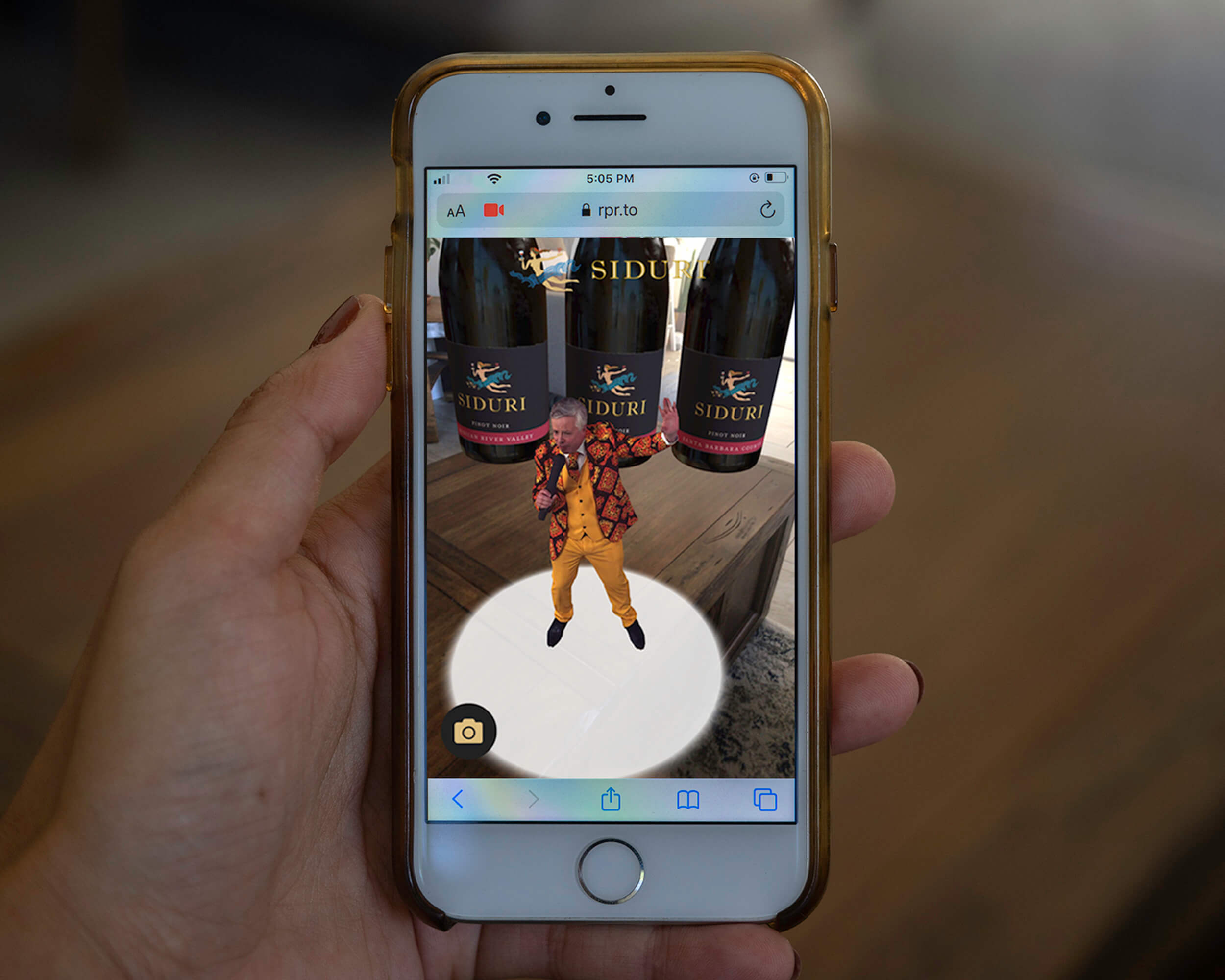
Holographic Adam playfully shares what makes Siduri wines so special, the wine’s history, and gets into some shenanigans along the way. This brings more attention to Siduri Wines in the aisle, differentiates it from competitors, and gives customers a reason to pick the wine off the shelf and new distributors a reason to carry the wine in their store.
The campaign is built using WebAR, which means that the entire experience takes place on the web browser and there is no need to download any additional apps. Simply scan the QR code with your phone’s camera and the experience unfolds on your mobile browser. It’s that easy!
Let’s chat
Not sure where to start? Book a free strategy call with us to get started! No strings attached.
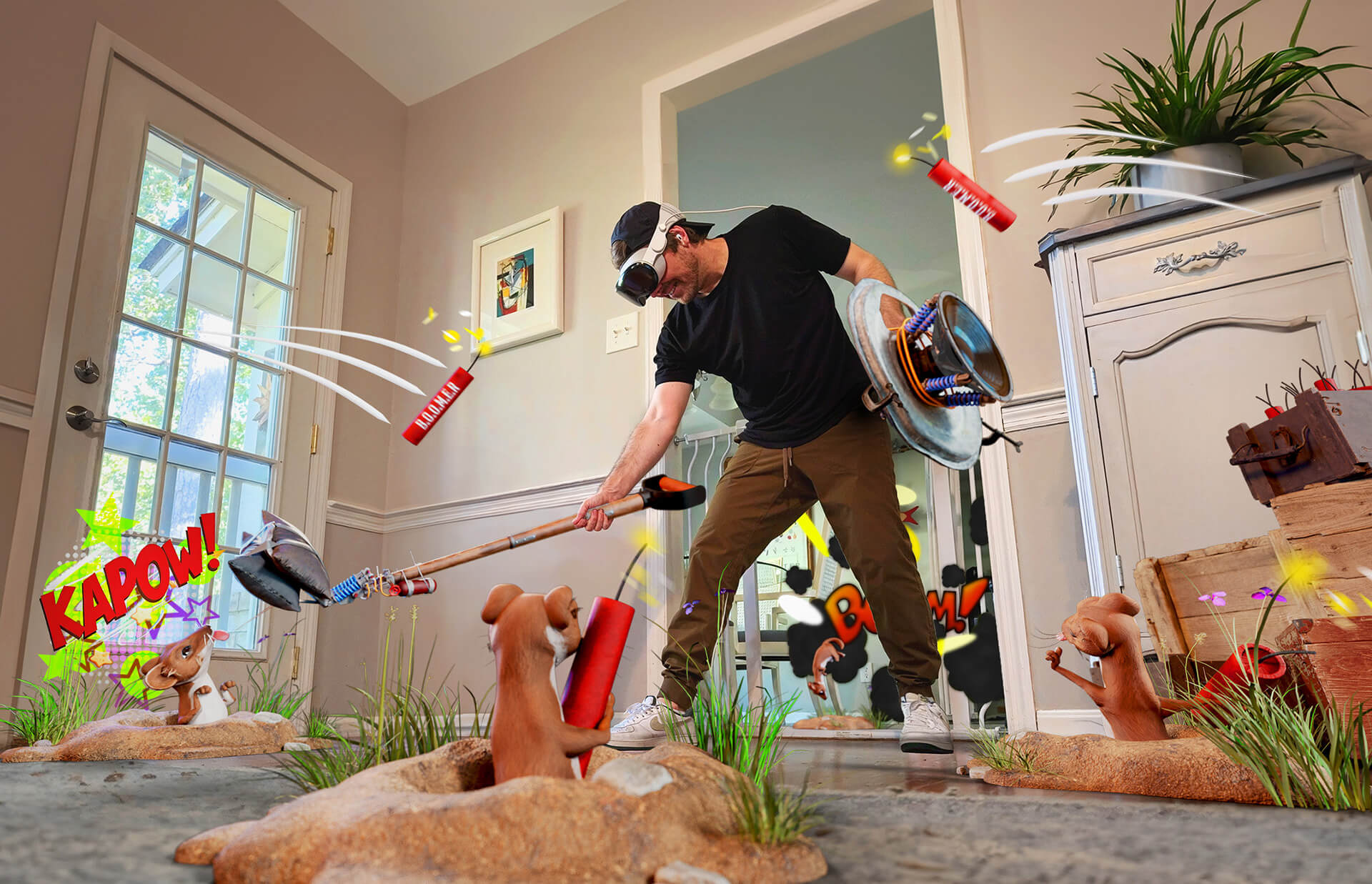
The AR NHS project
When it comes to the consumer world, Augmented Reality is often used for entertainment or promotional purposes. However, almost any industry can benefit from augmented reality, such as education, healthcare, or transportation to name a few.
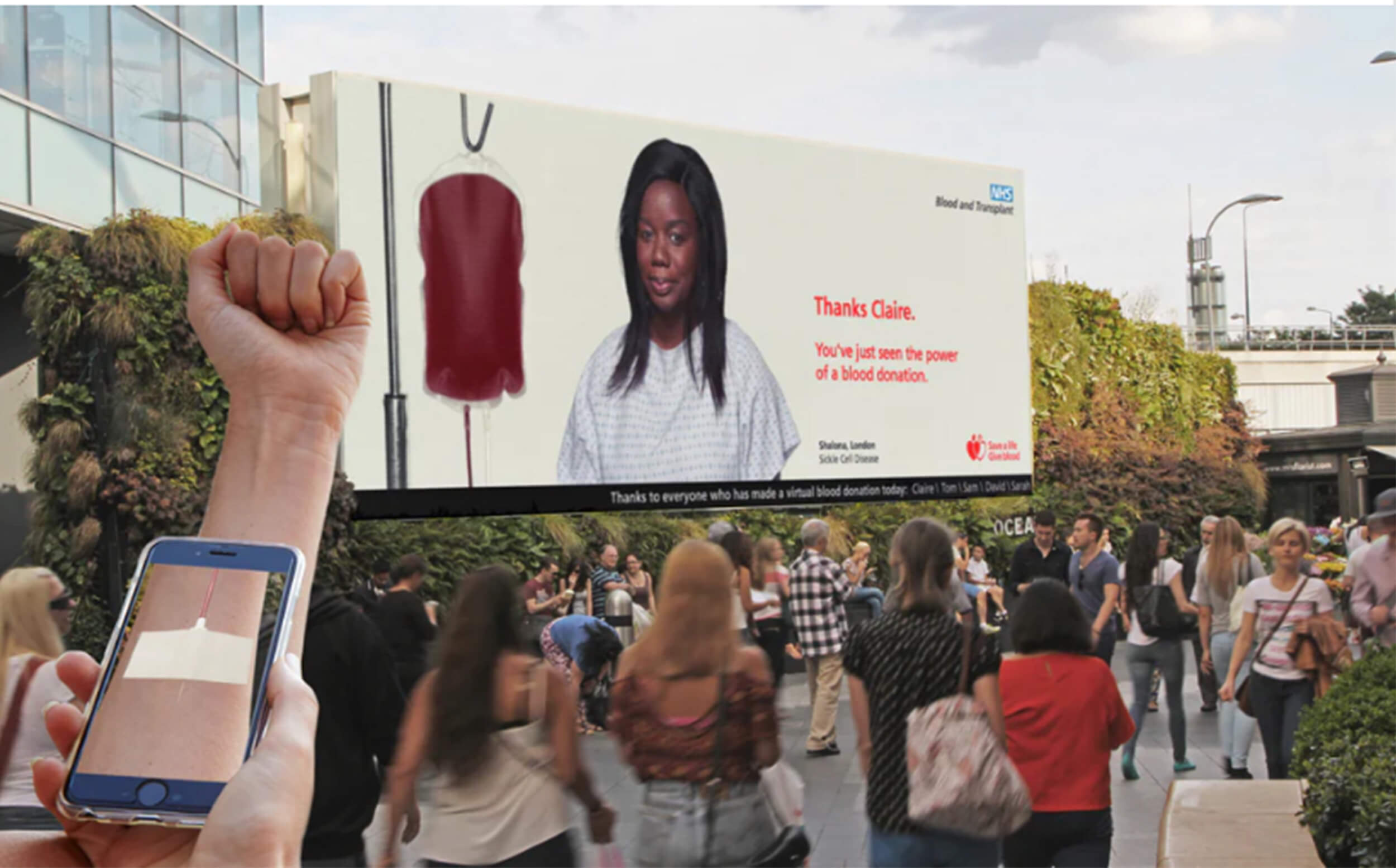
NHS’s groundbreaking campaign focused on building awareness of the power of donating blood. The NHS Blood and Transplantation organization placed billboards in Birmingham and London that allow users to virtually donate blood to those in need.
Users needed to download an AR app that overlays a virtual needle on the person’s arm. This enabled them to virtually fill the empty bag of an ill patient on the billboard. The sick patient on the screen begins to feel better as the person is virtually donating blood.
The AR Burger King Project
Burger King cleverly used the billboards of its rivals to advertise their own product by using augmented reality. The ‘Burn that ad’ campaign was launched in Brazil and it enabled users to virtually burn the ads of other competitive burger brands using their mobile phone.
Users needed to download the Burger King app and point the camera at a poster or billboard to set it on fire. Once they did that, a Burger King ad was shown in its place and revealed a free Whopper coupon that could be redeemed at the nearest restaurant.
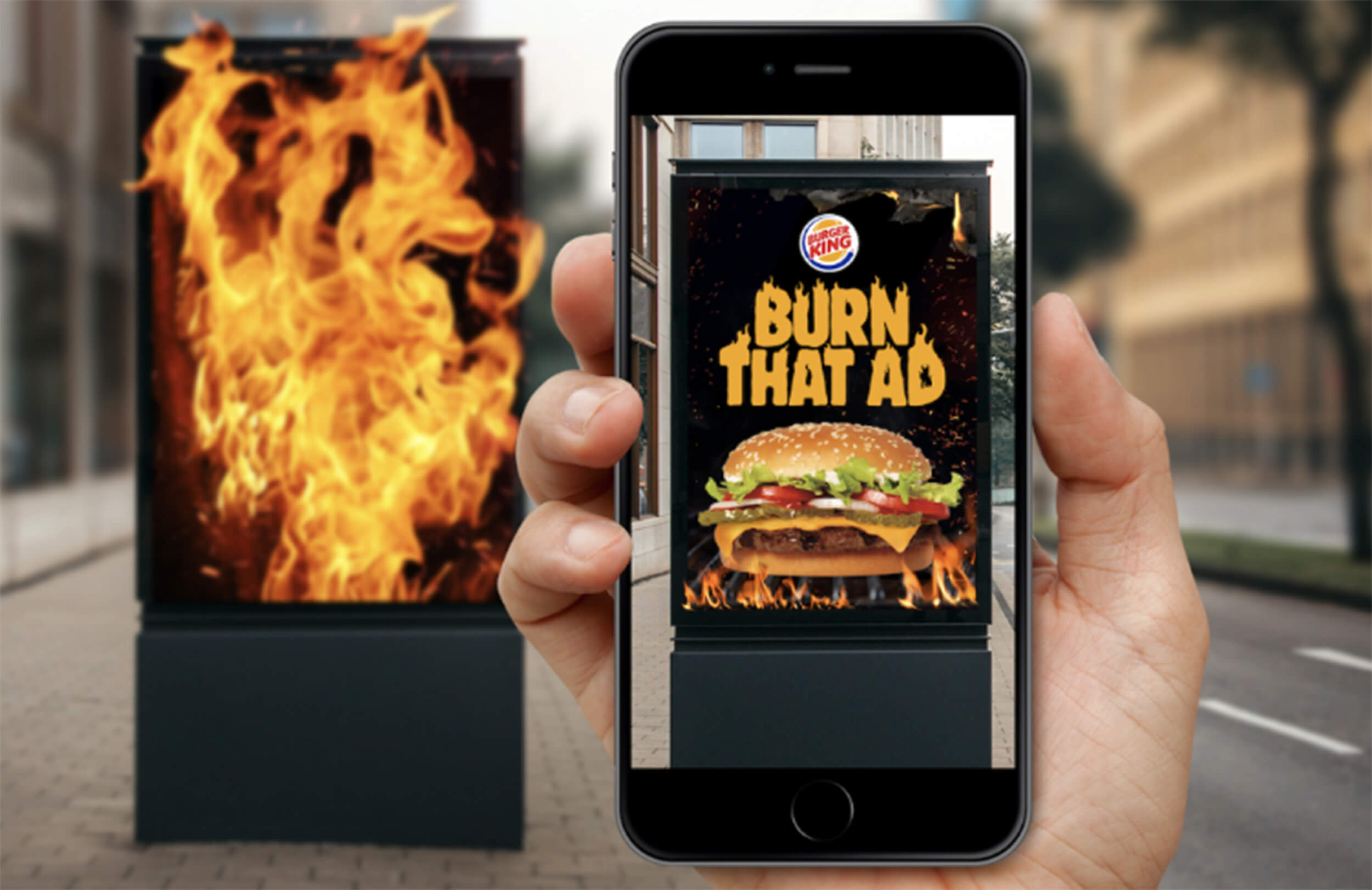
The campaign resulted in 1 million downloads in just one month and increased the in-app sales by 56.4%. With such a resounding success, the app created for the campaign became the most downloaded Burger King app worldwide.
The AR Monopoly Project
Ally Bank partnered with the famous board game brand to create a live Monopoly-theme AR treasure hunt game. The campaign’s goal was to increase their customers’ level of comfort with money concepts in a fun and engaging way. And what better game to promote financial literacy than Monopoly?
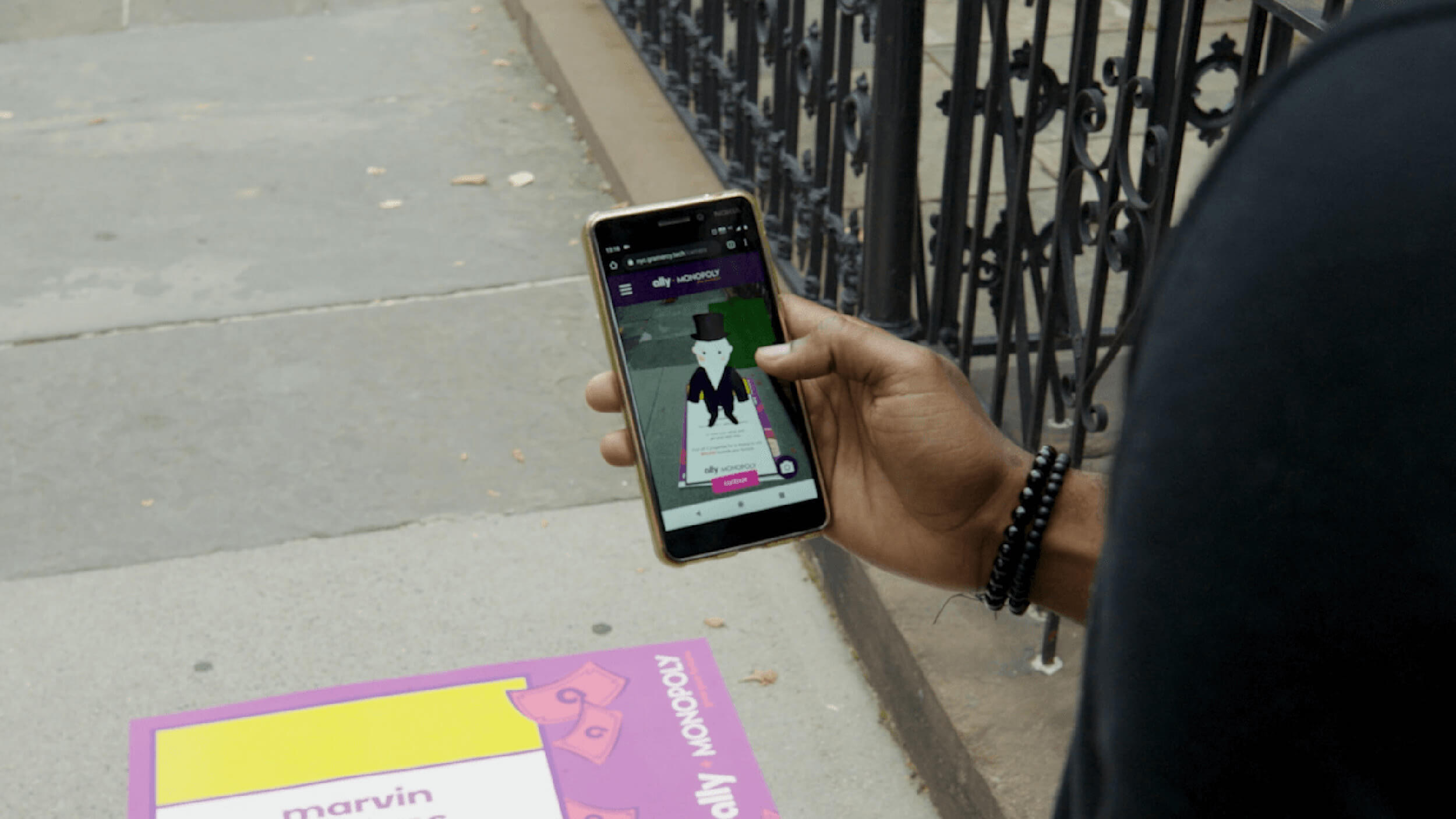
Ally Bank installed 36 squares of Monopoly game board in 6 cities across the US, each containing an AR experience. The campaign used Web AR technology that enabled users to scan each square to gain access to the augmented reality experience. The AR animation showed Mr. Monopoly handing out points and cash prizes.
The highly engaging AR treasure hunt resulted in 100,000 plays with 86% of people collecting all the squares and completing the game.
The Future of AR in OOH Advertising
AR Out-of-home Advertising opens the door to an endless reinvention of marketing strategies, merging the online with the offline world. Tech innovations turn stagnant billboards into augmented reality experiences that engage with users and create emotional connections. It is unlikely that AR will completely replace existing OOH ad formats any time soon.
Businesses will continue to invest in posters and billboards, but now they can fuse their physical ads with AR content designed to increase dwell times, brand retention, and drive richer user analytics.
RPR is committed to pushing the boundary between the real world and the digital space. We create web-based and app-based AR programs that revolutionize brand storytelling and help our clients become market leaders.
See Also: Web AR Examples
